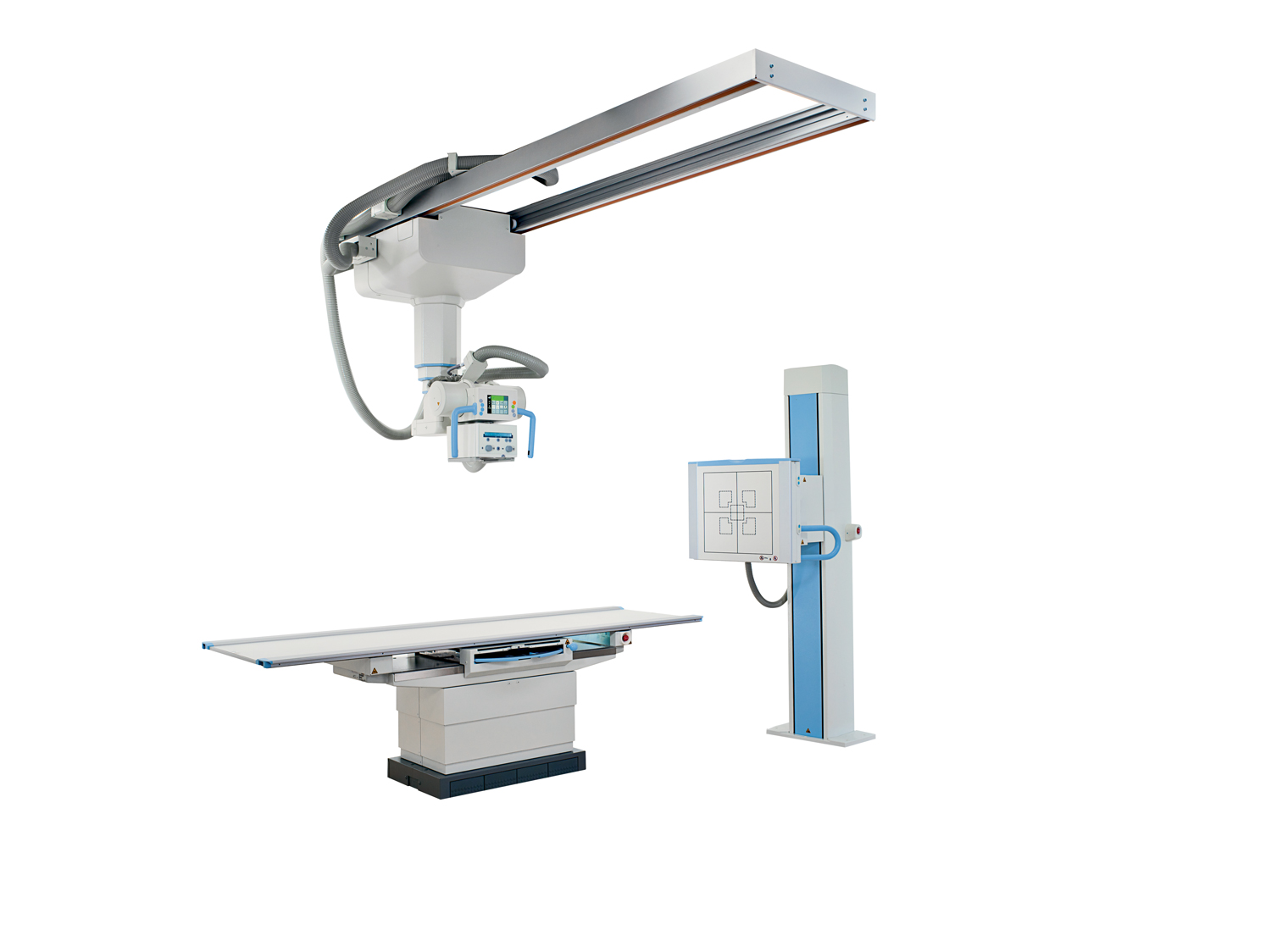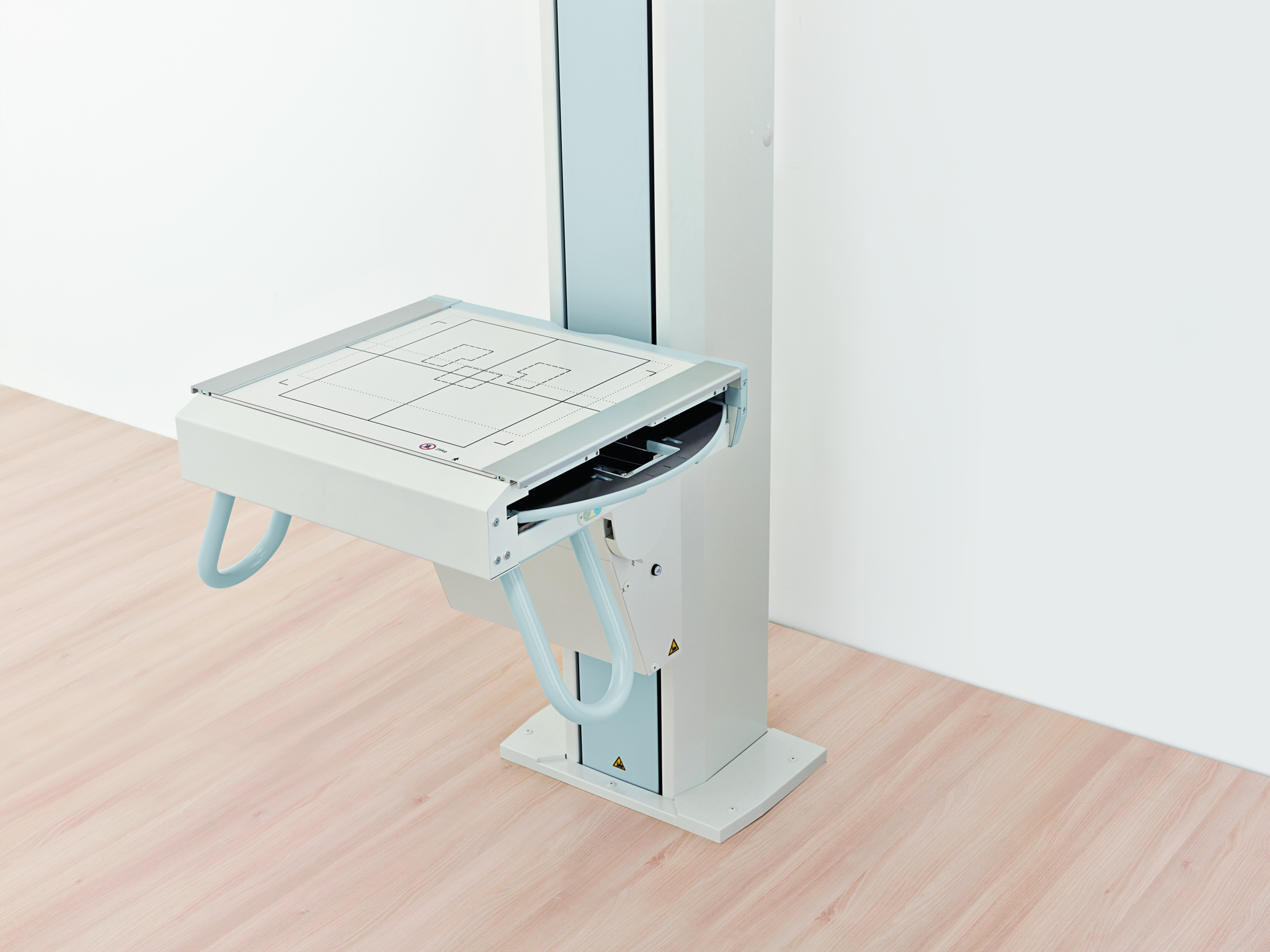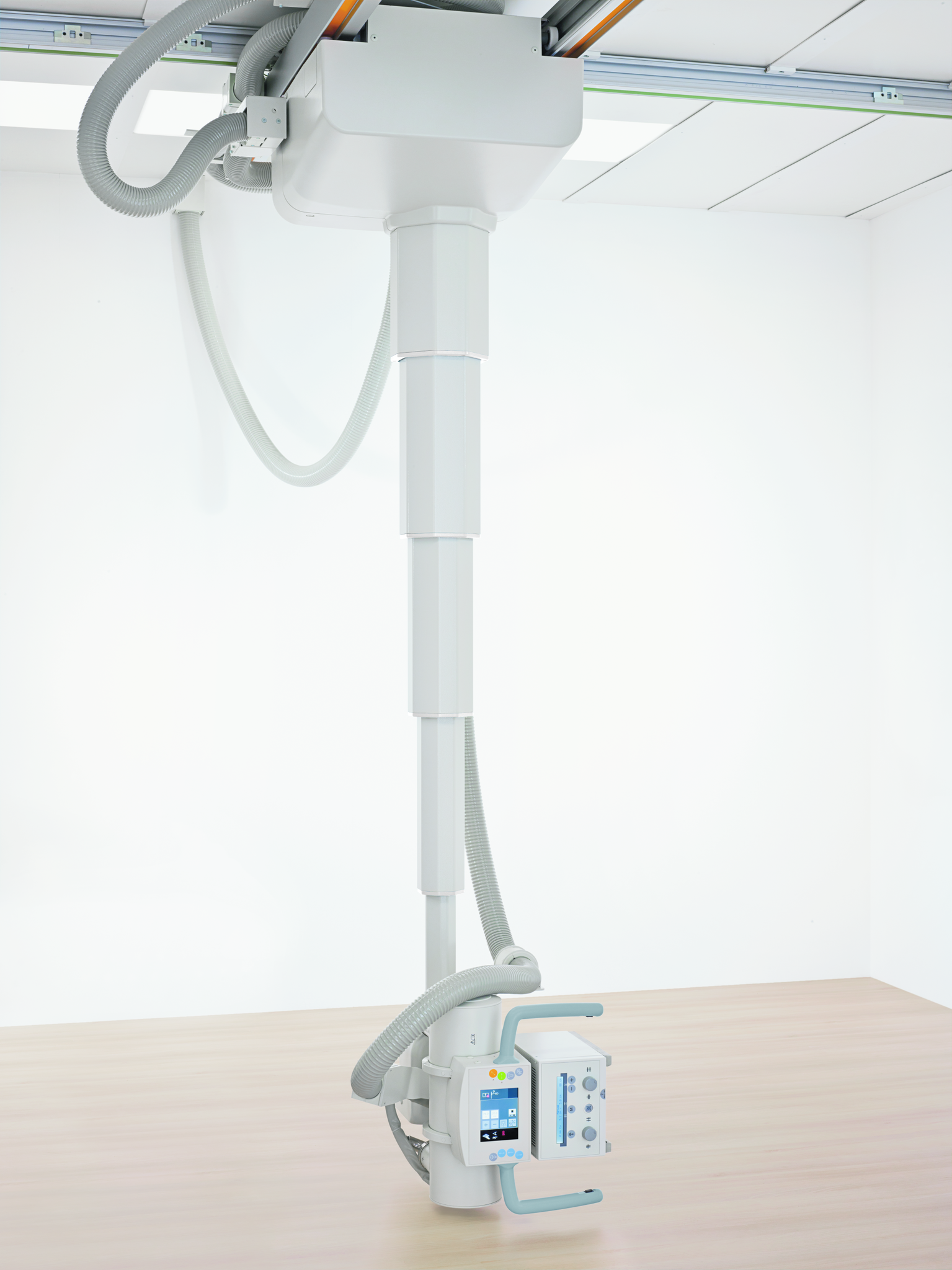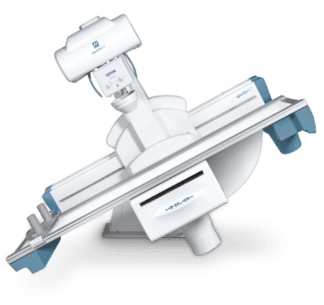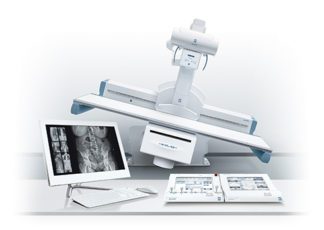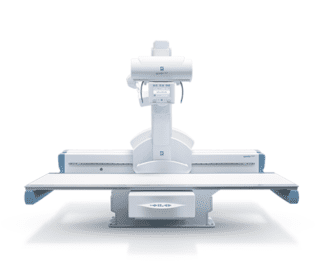Description
ISS and Dynamic Visualization™
The D-EVO Suite II uses two of Fujifilm’s innovations: Irradiated Side Sampling (ISS) and Dynamic Visualization.
Fujifilm’s patented Irradiated Side Sampling (ISS) technology increases sharpness and DQE by reducing light scatter and blur. Fujifilm positions its thin-film transistors (TFT) at the top of the capture layer, reading image data where it is sharpest and strongest, resulting in exceptional detail and image quality, even at lower doses.
Fujifilm’s Dynamic Visualization image processing automatically recognizes the region of interest and applies the optimum image processing parameters throughout the entire exposure field, dynamically extending contrast visibility, and improving window and leveling for exceptional images with high diagnostic detail. Additional advanced functions include:
- Multi-Frequency Processing (MFP): Applies edge enhancement and gray scale processing to multiple frequencies, improving visibility for varying densities and foreign structures. Useful in viewing spine, skull and orthopedic hardware images
- Flexible Noise Control (FNC): Selectively suppresses noise without loss of sharpness. Useful for pediatrics, lumbar spine and abdomen views
- Grid Pattern Removal (GPR): Intelligently removes moiré patterns caused by grids
- Fujifilm DR to Fujifilm Synapse PACS viewing shortcuts: Applies radiologist-specific single-click processing preferences to views, significantly simplifying workflow
- Auto-stitching is optionally available for scoliosis and long-leg images
Auto Stitching for long length imaging
Semi-Automated long length image capture at the chest stand is available as an option. Synchronized detector and tube travel acquires up to 3 images which are intelligently stitched together by the workstation software for one seamless long length image. Option needs to be purchased with the room up front and includes detector built into the chest stand, motorized tube angulation movements and image stitching software.
- Multi-Frequency Processing (MFP): Applies edge enhancement and gray scale processing to multiple frequencies, improving visibility for varying densities and foreign structures. Useful in viewing spine, skull and orthopedic hardware images
- Alignment markers on the patient positioning shield/stand assist software to accurately align images
- Seamlessly stitches multiple images together using FDX Console software, which automatically recognizes specially-fixed markers
- Motion Suppression intelligently adapts image alignment to reduce effects of patient movement between exposures

